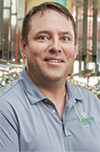At the parlor and in terms of milk production, the liner is where things begin. Starting with the sticker price to determine which liner to buy is just the beginning, too.
In the dairy business, where margins are tight, economic realities keep changing and quality labor shortages abound, every drop of milk matters. One can’t overstate the significance of the liner. And as each dairy is unique, the right liner isn’t always obvious.
It’s wise to take a look at the cost considerations that go beyond the initial price and, in fact, expand upon the idea of “cost” altogether. Think instead about the “cost per milking” and how a variety of factors affect that milking cost and your overall operation. That extra research can confirm if you currently have the right liner or if a better alternative is out there.
Start here: Cost per milking
Take the number of milkings expected per liner and divide it by the up-front price. That’s the easy part. Next is calculating other factors that come into play, both in terms of tangible and intangible costs that make the decision not as cut-and-dried.
Some of these factors encompass the design and material – rubber or silicone – and include the flow rate, the longevity of the product, ensuring the health of the cow and the quality of the milk produced. When taken together, your cost per milking goes beyond dollars and cents to create the best value for your operation. It’s that value which goes to the heart of your dairy business.
Tangible cost No. 1: Milk flow
Obtaining milk from your herd at a greater speed allows you to reach production capacity faster. By turning your parlor more quickly, you’ll have more capacity throughput and more time to do other tasks on your dairy. While this is fairly evident, what’s less obvious is how to achieve the right speed without causing undue stress on the liner or cow – which can lead to maintenance-related delays – or the herd itself.
In the case of a dairy that wants to pick up milking speed, look for a multisided liner with a thicker wall. The thicker the liner wall, the higher you can turn on the vacuum to bring about higher flow rates. Also, multisided liners are better designed to produce higher flow rates while maintaining cow comfort and teat-end health.
Tangible cost No. 2: Longevity
No liner lasts forever. But they should last long enough to generate revenue rather than costing you money. A longer-lasting liner means fewer costly change-outs over time, which can slow down an operation and cost money in operational expenses.
In addition to milk flow, thicker walls also contribute to durability. Generally, thicker walls indicate strength and durability that can mean thousands of additional milkings per liner.
Also consider the wear and tear liners experience in your parlor. When the liners are detached from the cows, they get kicked around, bump into objects and trampled upon, among other things. Depending on how your parlor is designed, consider selecting a liner that has options to help prevent cuts or a material that can withstand those cuts, abrasions and impacts.
Intangible cost No. 1: Herd health
It’s possible to milk fast and have good teat-end health. The well-designed liner matched with the proper material affects comfort and can be more forgiving. For example, if a liner tends to get twisted, it harms the teat end and affects milk flow and the health of the cow. Many liners are available that lock into a shell. These liner/shell options were designed to work in tandem to create predictable, repeatable milking performance. And options are available in multisided liners which have also shown better teat-end health results.
Even if one is of the mind that cow comfort may not affect the balance sheet, a comfortable cow is a happier, more cooperative cow. To help ensure cow comfort and teat-end health, look for a liner that tends to be more flexible, and trust a partner who understands the importance of dairy-grade products and the overall health of your cows.
Intangible cost No. 2: Milk quality
As quality standards at grocery retailers – and customer demands – remain stringent, it’s best not to leave things to chance in terms of quality.
All liners come with a recommended life span. It’s important to understand how the liners will hold up toward the end of it. Silicone liners have ultra-smooth interior surfaces that are much less prone to cracking and deterioration than other materials. With silicone, the interior surface stays smooth throughout the life span of the liner. By maintaining this smooth surface, the potential for bacteria to grow in the liner is reduced through more effective cleaning cycles; without the cracks inside the liner, you are eliminating places to harbor bacteria.
Finally, liners sold today should be tested in accordance with the proper FDA regulations, and manufacturers routinely perform these tests to ensure compliance. In cases where this is important to you, rest assured there are liners available in materials that are BPA and phthalate-free and are produced with little to no carbon.
Make the right decisions work
These cost factors add up to help provide maximum value, a healthy parlor and a good profit margin. But these factors can be undermined if the system itself is flawed or installed with less than 100% accuracy and precision. Find a company that knows how to set up your parlor to maximize your liners. Otherwise, the potential value from considerations and decisions can be lost.
The right liner is a business decision based on rational contemplation and your own instinct. The more you investigate, talk to trusted sources and test alternatives, the better your parlor and your bottom line will be. Seek out a partner who can guide you and prove why a specific liner is better for your situation. Let them focus on optimized milk production while you focus on running the rest of the dairy.





